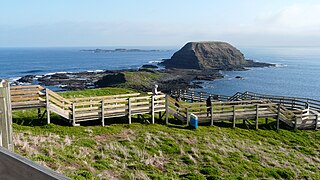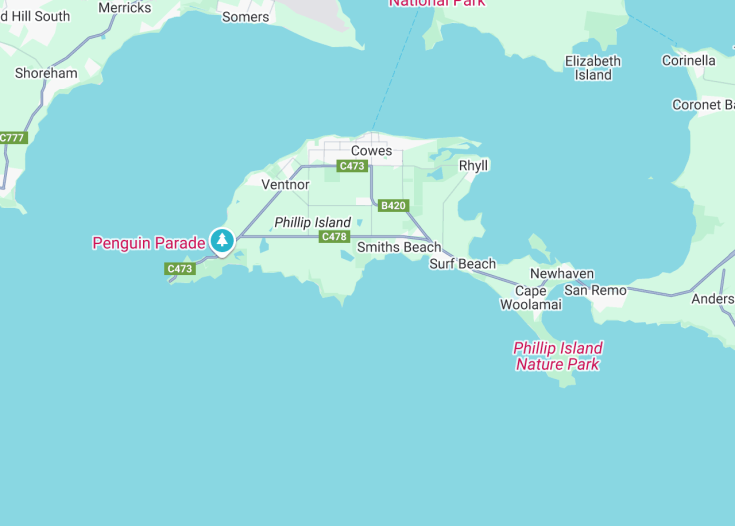Phillip Island, located in the stunning state of Victoria, Australia, is a captivating destination that promises an unforgettable blend of natural beauty and wildlife encounters. Renowned for its rugged coastlines, serene beaches, and the famous Penguin Parade, this island offers a unique opportunity to witness little penguins returning ashore at sunset. Visitors can also explore the Koala Conservation Reserve, enjoy thrilling races at the Phillip Island Circuit, and learn about marine life at the Antarctic Journey exhibit. With its rich history and scenic landscapes, Phillip Island is a perfect getaway for nature lovers and adventure seekers alike.
Before visiting Phillip Island, check the schedule for the Penguin Parade as tickets often sell out quickly, especially during peak season. Booking in advance ensures you won’t miss this spectacular sight.
To make the most of your Phillip Island experience, consider staying overnight. This allows more time to explore the island’s attractions and catch both sunrise and sunset views over the ocean.
Top things to do & see in Phillip Island
Select the following sights and activities to discover best tickets and tours available in Phillip Island.
Phillip Island: A Natural Haven Down Under
| Country | Australia |
| Time in Phillip Island | GMT+10 |
| Language spoken | English |
| Population | 10,387 (Data from 2022 Census) |
| Currency | Australian Dollar (AUD, $) |
| Airports |
|
Phillip Island, situated in the state of Victoria, Australia, is a beloved locale that harmoniously blends natural wonders with rich history and vibrant community life. Covering approximately 100 square kilometers, this island attracts visitors with its breathtaking coastlines and intriguing wildlife. Known around the world for the Phillip Island Penguin Parade, this unique phenomenon sees Little Penguins waddling ashore at dusk, a spectacle that captures the heart of every onlooker.
Historically, Phillip Island was named after Governor Arthur Phillip, the first Governor of New South Wales. Since its discovery, the island’s blend of natural habitats—including sandy beaches, rugged cliffs, and lush greenery—has been protected and cherished. Tourism, consistent with sustainable practices, plays a central role in the local economy alongside agriculture.
Culturally, Phillip Island remains an eclectic mix of traditional influence and modern lifestyle, with festivals celebrating everything from jazz music to motorsport, thanks to the well-known Phillip Island Grand Prix Circuit. Local eateries offer a range of delicious foods, often emphasizing fresh seafood and local produce, complementing the laid-back coastal way of life.
The community’s commitment to environmental conservation is palpable at sites like the Koala Conservation Reserve and the Nobbies Centre, where visitors can engage closely with native wildlife and marine life conservation efforts. These endeavors help ensure that the island’s biodiversity thrives alongside community growth and tourist activities, solidifying Phillip Island’s reputation as a must-visit destination for nature enthusiasts and those seeking a serene escape.
Where is Phillip Island?
Phillip Island is located in the southern part of Australia, just off the coast of Victoria near the city of Melbourne.
Distances:
| Route | Distance by car | Time by car |
| Melbourne to Phillip Island | 87 miles (140 km) | Approx. 1.5 hours |
What is Phillip Island famous for?
Phillip Island is renowned for its stunning natural landscapes and wildlife encounters, most notably the nightly Penguin Parade, where visitors can watch Little Penguins returning ashore in groups.
History
Pre-1800: Indigenous Heritage
The history of Phillip Island begins long before written records, with its original inhabitants, the Bunurong people. Part of the Kulin nation, the Bunurong people lived on and cared for the land, engaging in fishing, hunting, and gathering as their primary means to sustain their community. The island’s rich natural resources, including its marine life and varied landscapes, supported a thriving indigenous culture steeped in deep spiritual connections to the land and sea.
1801-1900: European Discovery and Settlement
Phillip Island was first sighted by Europeans in 1798, during George Bass’s expedition. It was later named in 1801 by navigator Lieutenant James Grant, who honored Governor Arthur Phillip, the first Governor of New South Wales. In the mid-19th century, the island saw its first European settlers who began agricultural and pastoral activities, significantly altering the landscape and the way of life on the island. This period marked a profound transformation in the island’s history, characterized by land exploitation and the marginalization of its indigenous peoples.
1901-2000: Development and Conservation
The 20th century was a defining period for Phillip Island, witnessing both development and the beginnings of conservation efforts. The island became increasingly popular as a tourist destination, particularly noted for its wildlife and scenic beauty. In response to the environmental impact of increased visitation and habitation, several conservation programs were initiated. Key among them was the establishment of the Phillip Island Nature Park in the 1990s, aimed at protecting native species and habitats, especially the famous penguin colonies.
2001-Present: Modern Era
In recent years, Phillip Island has solidified its reputation as a premier location for nature lovers and eco-tourists. Efforts have continued to balance growth and conservation, with sustainable tourism practices increasingly adopted by the local community and authorities. The island has also gained international attention for its wildlife conservation, particularly the protection of the little penguins, seals, and koalas, making it a model for wildlife preservation globally.
Visit Phillip Island
What to see and do in Phillip Island
Phillip Island, located in Victoria, Australia, offers a plethora of attractions and activities for visitors of all ages. For nature enthusiasts, the Phillip Island Nature Park is a must-visit, where you can watch the famous Penguin Parade at sunset as little penguins return to their burrows after a day at sea. Wildlife lovers can also enjoy the Koala Conservation Reserve and the Seal Rocks, where you can observe Australian fur seals. For a more adventurous outing, explore the island’s rugged coastline by taking a stroll along the Nobbies boardwalk, where you can enjoy breathtaking ocean views and possibly spot whales during migration seasons. Motor sports fans should not miss the Phillip Island Circuit, known for hosting major events such as the Australian Motorcycle Grand Prix.
- Penguin Parade
- Koala Conservation Reserve
- Seal Rocks
- The Nobbies boardwalk
- Phillip Island Circuit
Annual Events in Phillip Island
Phillip Island plays host to a range of events throughout the year, making any season a great time to visit. The most notable is the Australian Motorcycle Grand Prix, a major event in motor sports, typically taking place in the spring. Summer brings the popular Phillip Island Jazz Festival, attracting musicians and music lovers from around the country. Additionally, the island celebrates its natural and cultural heritage during the Phillip Island Nature Festival, held in autumn, featuring wildlife walks and ecological workshops.
Best time to visit Phillip Island
The best times to visit Phillip Island largely depend on the visitor’s interests. For wildlife observation, especially the penguin viewing, spring (September to November) and autumn (March to May) are ideal due to milder weather and active wildlife. Summer (December to February) is perfect for beaches, festivals, and outdoor activities, although it can be quite crowded. Winter (June to August) offers quieter visits and the possibility to see whales, making it ideal for those preferring a more tranquil experience.
Is Phillip Island worth visiting?
Phillip Island is undoubtedly worth visiting for its unique blend of natural beauty, wildlife experiences, and engaging activities. The opportunity to witness the nightly Penguin Parade and interact closely with koalas at the conservation center presents a rare and enriching experience. However, potential visitors should be aware that peak tourist seasons can lead to crowded attractions and higher prices. Additionally, while the island is family-friendly, access to some natural areas might require a good level of physical fitness. Overall, Phillip Island offers a compelling destination for those interested in nature, wildlife, and outdoor activities.











